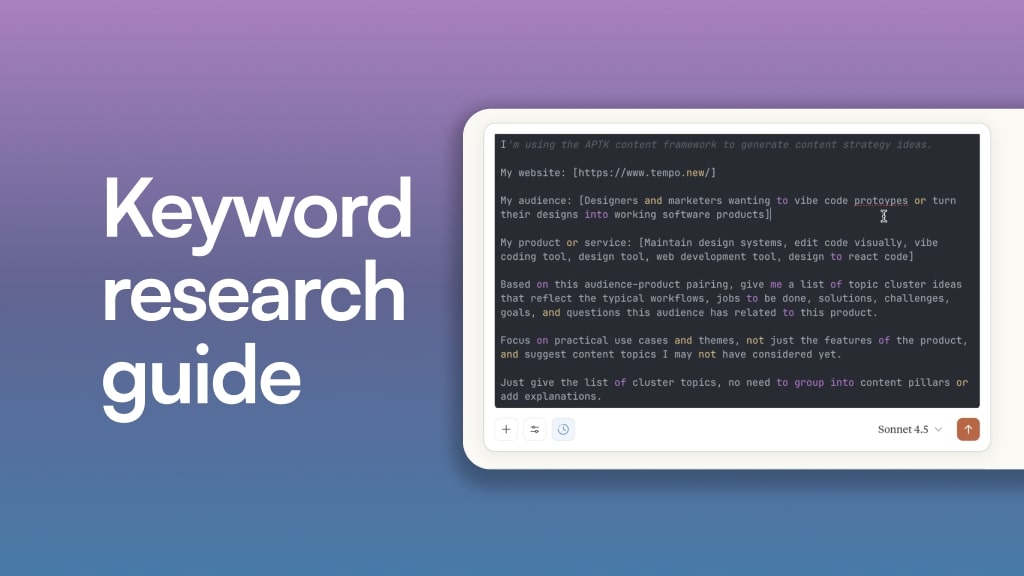If you’re an avid user of Google search, then there’s a good chance you’ve seen the People Also Search For section. In this article, I’ll explain what PASF is, how to find these keywords, and how to rank for them in Google.
The People Also Search For feature was quietly released back in 2018 in an effort to help those searching in Google to make follow up searches in the case that they didn’t find what they were looking for.
For example, a searcher might want to know “how to do content marketing” and they may make a search for the term “content marketing.” Google will show a bunch of articles showing “what is content marketing,” and it may not be what an individual is searching for.
The People Also Search For snippet will then show search terms like “content marketing strategies” or “content marketing examples” and a user can click on those related terms to find articles about how to “how to actually do content marketing.”
It’s a way for Google to improve its search results and help people find exactly what they’re looking for.
Because, at the end of the day, Google’s main goal is to end a user’s search journey as quickly as possible. This improves user experience and keeps people coming back to Google as their preferred search engine of choice.

In the rest of this article, I’ll explain in more detail what People Also Search For is, other types of featured snippets in Google, and how to rank for these types of keywords.
Here is what we'll go over (feel free to click to each section):
- What are People Also Search For keywords?
- People Also Search For (PASF) vs People Also Ask (PAA)
- What does People Also Search For mean on Google?
- What does Google say about the People Also Search For box?
- People Also Search For statistics
- Tools to find People Also Search For keywords
- How to rank for PASF keywords
- Conclusion
Let’s dive in!
What are People Also Search For keywords?
People Also Search For keywords are related search queries that people make regarding a certain topic that is being searched about.
It’s Google’s way of trying to help those searching for topics to discover related searches that they may be interested in.
The thing you have to remember with Google is that its goal is to end the user search journey as quickly as possible (did I mention that already?).
Oftentimes, someone may just be browsing around Google for a specific topic. For example, someone could search for something like “content marketing.”
When someone searches for “content marketing,” this is what populates in the SERP (search engine results page):

What happens is that none of these results may be what the user is looking for. So when a user clicks into an article, then clicks the back button, the People Also Search For snippet pops up.
It looks like this:

Essentially, PASF is triggered in the SERP when Google believes a user did not find what they were looking for (because they clicked the back button after clicking on an article).

In the example above, you can see that Google is saying that when people search for “content marketing” they may also search for things like “content marketing examples” or “content marketing course.”
This enhances user experience for those browsing on Google.
But it’s not the only thing it does.
This is actually a great tool for marketer’s and SEO’s looking to find keyword ideas.
If you find a general keyword you want to go after, search it in Google. Then you can get some long-tail keyword ideas by triggering the PASF box for your desired keyword.
You can also get keyword ideas through Google’s autocomplete predictions:

These are keywords that people are searching for in real-time. Often, keyword research tools won’t always be able to pick these up because they can be newly searched terms.
Another way to discover keywords straight from Google is through the People Also Ask (PAA) section. Let’s go over what that is.
People Also Search For (PASF) vs People Also Ask (PAA)
People Also Search For are keywords that Google knows people also search for after they make an initial Google search.
People Also Ask (PAA) are related questions that people ask related to a given keyword.
For the example of “content marketing,” these are the questions that PAA populates:

These are not necessarily keywords, but rather questions people ask regarding a topic. The PAA section can be a great place to uncover content and blog post ideas to go after.
You’ll also notice that the screenshot above shows a “Things to know” section in the SERP. This doesn’t populate for every keyword, but it does for some.
As you can see, Google’s SERP is constantly being updated with new results and ways of searching. Again, this is because Google’s mission is to end a user’s search journey as quickly as possible (I hope I made this point clear by now). This ensures a good user experience for those using Google as their search engine of choice.
What does People Also Search For mean on Google?
I’ve talked about this a bit above, but People Also Search For means that someone searching for a topic may make follow up searches. And the PASF shows what follow up searches people make.
For a user of Google, this can help them on their search journey to find the exact piece of content that fits their needs.
For SEO’s, this can help uncover more keyword ideas to go after.
What does Google say about the People Also Search For box?
There’s not much Google has publicly said about PASF. What we do know is that this feature was initially launched back in 2018.
It was sort of a quiet SERP feature that was released to improve user search experience. Oftentimes, Google will release new featured snippets within its search engine as it continues to test new ways for people to find answers to their questions.
While Google’s main ranking algorithm, PageRank, is stable in the way it operates, many of the smaller SERP features are constantly changing.
There’s a good chance that this will continue to be the case. We’ll most likely see Google update its SERP with new features and results. We are already seeing that, for some keywords, Google is no longer showing just 10 results per page — a good indicator that the SERP is constantly changing.
People Also Search For statistics
After analyzing over 15,000 SERP results, it is said that the People Also Search For results show on 58.74% of desktop searches and 87.05% of mobile searches.
On mobile, you’ll generally see the People Also Search For box labeled as “Related searches.” You can also find the “Related searches” section on desktop. It is located at the bottom of the SERP and looks like this:

Tools to find People Also Search For keywords
Here’s a list of tools to help uncover PASF keywords:
1. Google’s SERP
Of course, this is an obvious one. Just type in a keyword, ideally in a private browsing window (or incognito window) and click on a link. Then, click the back button and watch the People Also Search For box pop up.
Or, simply Google a keyword and scroll to the bottom of the page. You will be able to find related topics and get more keyword ideas.
2. Keywords Everywhere
Keywords Everywhere is a keyword research chrome extension that’s free to use. Once you install it, you’ll get extra SERP features that look like this:

As you can see, Keywords Everywhere will show you both “Related Keywords” and “People Also Search For” keywords. Most of the time, these results are quite similar.
This is a fast and easy way to uncover PASF keywords without constantly clicking into (and clicking back) on links within Google’s search results.
3. Ahrefs
Ahrefs is a popular SEO (search engine optimization) and keyword research tool. In fact, it is my favorite keyword research tool and I’ve been using it for years now.
To find related keywords, all you need to do is go to “Keywords Explorer” in Ahrefs. Once you type in a keyword, in this case I typed in “content marketing,” you will see this:

As you can see, Ahrefs will show you more than just PASF keywords. It will also show you things like “Questions” — which are from Google’s People Also Ask (PAA) — and a wide variety of other keyword ideas.
If you’re serious about SEO, I highly recommend Ahrefs. It is a bit on the pricey side and you definitely don’t need it if you just want to find PASF keywords (see the two free tools mentioned above). But nevertheless, it’s a great tool for SEO’s looking to grow their organic traffic.
I also wrote a guide on how to uncover these types of keywords in my SaaS content marketing guide if you want to check it out.
How to rank for PASF keywords
Ranking for a People Also Search For keyword is similar to ranking for any other keyword. I already have a comprehensive guide on how to write SEO blog posts that rank on the first page of Google, but I’ll go over a summary below.
Finding PASF topics to go after
Using one of the tools mentioned above, find a keyword you want to go after. The trick is to find long-tail keywords that you actually have a chance of ranking for.
SEO’s love to complicate things when it comes to ranking factors. But this is what really matters:

Let’s go over each one.
Search intent
Getting the search intent for a given keyword is the most important ranking factor. You can discover search intent by simply searching for a keyword in Google.
For example, if I search for “content marketing,” I can see that the top three ranking web pages are articles about “What is content marketing”:

This tells me that Google likes to rank articles, for this keyword, that talk about “what is content marketing.” Google has deemed this is the search intent people have when they are searching for this term.
That means, if I want to target the keyword “content marketing,” I need to create an article explaining what it is.
If I create an article about “How to do content marketing,” it won’t rank well for this exact keyword. Instead, if I want to write about “how to do content marketing,” I should really be targeting the keyword “content marketing strategy.”
Search intent is super important, do not overlook this step.
Again, all you need to do is be observant with what Google likes to rank at the top of its search page for a given keyword and write a blog post that is related to the top ranking articles.
Create an outstanding outline
Once you have a keyword idea, and know the search intent, it’s time to make a content outline.
You can use a tool like Surfer SEO to help you craft an SEO outline for your article. In Surfer SEO, all you need to do is type in your desired keyword and generate a report.

The report will show you related keywords you should place in your article, and give you ideas of what you should be talking about within your article.
It’s a great way to make sure your articles are fully optimized for Google. Optimization is a key part to getting traffic to your articles, so you definitely want to leverage a tool like Surfer SEO if you’re serious about driving organic traffic to your website.
I also have a list of other content optimization platforms just like Surfer SEO if you want to check out.
Again, see my guide on writing SEO blog posts (linked above) for more information on how to rank articles in Google.
Interlinks and backlinks
Once you publish your article, you want to make sure that you “interlink” it with other pages on your website. This means that you want every page on your site to link out to related pages that already exist on your site.
This will help you create a knowledge graph and show Google that you have topical authority over a given topic.

You can think of interlinking like getting backlinks, except you’re giving yourself these links from other pages on your website.
Ideally, you want a page on your site to have at least three links pointing to it from other articles on your site.
If you follow the steps above, you should get an article that ranks higher in Google’s SERP (after a few months).
If, after a few months, you aren’t ranking high in Google’s SERP, it probably means that you went after a competitive keyword that requires backlinks to rank.
Backlinks are links from other websites on the web that are pointing to yours. It’s a strong ranking factor for Google as it shows that your content is trustworthy enough that others are willing to link out to it.
I won’t get too much into how to get backlinks, but this is a great video if you want to learn more:
Okay, that’s it!
Conclusion
People Also Search For keywords are a great way for marketers to uncover keyword ideas they may have otherwise not found.
The great thing about PASF keywords is that it’s information that Google is telling you directly. It’s not from a keyword research tool. So these keywords can be very valuable because they are terms that people are searching for in real time.
Often, these keywords can have a lot of search volume, even if keyword research tools show otherwise.
These related queries can help you craft a bunch of content ideas and improve your organic search results over time.
While this feature is intended to help those searching in Google, as a marketer it’s a great way to fuel your SEO strategy. SEO is all about demand and supply. If you can find what people are searching for, and create a resource that fits that user intent, it’s inevitable that your organic traffic metrics will start to grow.
Get the weekly newsletter keeping +30,000 marketers in the loop.















